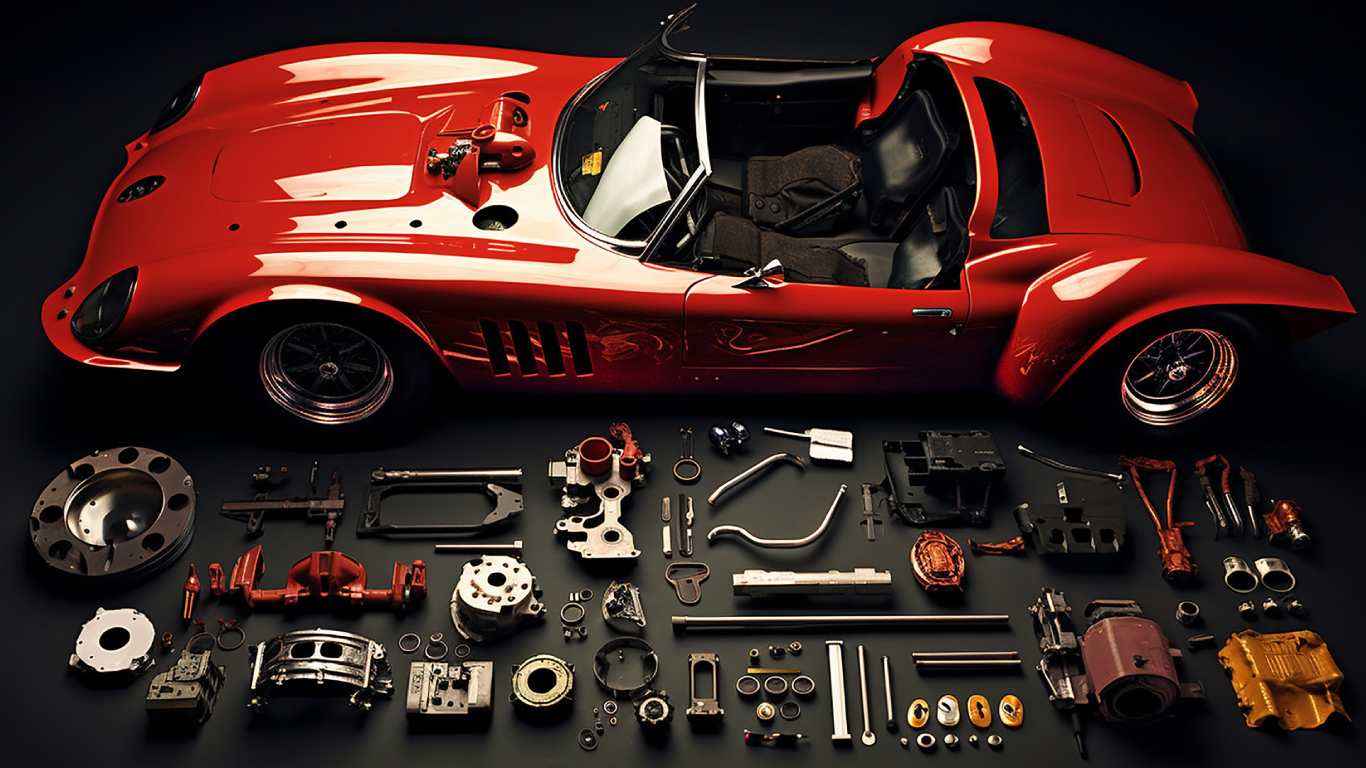Legal vs. Illegal Car Modifications in Canada: Insurance & Legal Risks

Want to turn your car into a head-turner? Car modifications offer a thrilling way to express your unique style and enhance performance. However, with countless possibilities comes the challenge of navigating complex regulations.
Understanding Canadian car modification laws is essential. From Quebec's SAAQ to broader national standards, ensuring your vehicle remains safe and legal is paramount. This guide cuts through the confusion, providing clear information on allowed and prohibited modifications.
Let's explore the best modifications for a car. Discover which upgrades can elevate your driving experience without compromising safety or breaking the law.
Allowed Car modifications in Canada
1. Wheel/Rim Upgrades
While tires may seem like a small car component, they significantly impact a vehicle's appearance, especially when paired with aftermarket alloy wheels. Wheel modifications are permitted in Canada as long as the tire's external diameter remains consistent with the original. Contrary to the belief that larger tires equate to lower performance, premium lightweight rims can enhance aesthetics and performance. Avoid wheel and rim car modifications that compromise safety features.
2. Stylized Car Rocker Panels in Canada
While stylized rocker panels can enhance a vehicle's appearance, it's essential to prioritize safety when making car modifications. While generally permitted in Canada, ensuring they don't compromise the vehicle's structural integrity is crucial.
Rocker panels play a vital role in passenger protection. These structural components reinforce the car's body, helping to prevent the passenger compartment from deforming during a collision. Rocker panels help keep you safe by working with other car parts to absorb the shock of a crash.
3. Spoiler for Car Modifications
Adding spoilers or side skirts is generally legal, as long as they don't touch the tires or road. So, the spoiler must not exceed the vehicle's width and cannot obstruct lights, including brake lights, turn signals, or license plate lights.
Also, the spoiler should not create a safety hazard for the driver or other road users. For example, it should not obstruct the driver's view or create excessive drag.
4. The bumper shell
If you want to change the car bumper shell, go for it! But remember, the SAAQ says the hidden parts of your bumper that absorb crash energy should not change. They're like invisible shields, keeping you safe. So, customize, but keep those safety features in check!
5. Seats for Automobile Modification
According to Canadian car seat laws, you can replace your car seat as long as using the same parts your old seat used, like the original rails or anchors.
By improving your driving posture, seats can elevate your overall driving experience. Many manufacturers, such as Recaro, produce sports seats for everyday driving. Always ensure compatibility with your car's seatbelt and airbag system.
6. Cat-Back Exhaust Systems for Car Modifications
Installing a larger size of the cat-back exhaust system can boost your engine's power by allowing exhaust gases to escape more freely. The new system must be securely fastened, leak-free, designed for road use, and produce noise levels identical to the original.
Generally, cat-back exhaust systems are legal in Canada. However, be aware that larger exhaust systems often produce louder sound. Your car's exhaust can't be too loud or unusual, especially where people live. Also, ensure that your modified exhaust complies with federal and provincial emissions standards.
7. Windshield
You can affix a tinted or opaque band with a maximum width of 15 cm to the top of the windshield. No other attachments in car modifications are allowed on the windshield except parking or inspection labels.
8. Raising Your Car
Raising a vehicle is limited to 1.5 inches for tires and 2.5 inches for chassis. Lowering requires specific components and limitations.
While for off-road adventures, raising your car's suspension is essential. Lift kits provide the necessary clearance to tackle rough terrain. Additionally, installing sway bars enhances stability during cornering, while performance coil-overs with stiff compression rates absorb shocks effectively, ensuring a smooth and controlled ride. However, these kinds of car modification types are illegal in Canada.
9. Window Tint
Front-side windows must allow at least 70% light transmission in Canada. Window tint laws change from province to province in Canada. Each place has rules about how dark your car windows can be. You can get a special permit for medical reasons.
10. Headlights
Headlights and reflectors are crucial safety components of your vehicle, designed to improve visibility, especially during low-light conditions. When replacing headlights or reflectors, you should use SAE-marked parts. This certification guarantees that the components meet specific safety and performance standards.
Illegal Car Modifications in Canada
1. Suspension Upgrades for Car Modifications
Upgrading your car's suspension can dramatically enhance its performance and driving experience. A well-tuned aftermarket system can improve handling, comfort, and driving dynamics. Whether you're a performance enthusiast or desire a smoother ride, investing in a quality suspension is worthwhile, but this is illegal in Canada.
2. Lowering Your Car
Lowering your car's ride height can significantly improve handling and stability by lowering the center of gravity. This modification is popular among drivers seeking a sportier feel.
3. Turbochargers and Superchargers for Car Modifications
Adding a turbocharger or supercharger is a popular way to boost your car's performance. These devices increase power by forcing more air into the engine. Unlike nitrous oxide, which is illegal in most places, turbochargers and superchargers are generally legal as long as they don't cause your car to fail emissions or safety inspections.
4. Car Bumper Components
Car bumper components essential for safety must remain original and unaltered. Hidden behind the bumper cover are the energy absorber, reinforcement bar, and bumper brackets.
Modifying the energy absorber is strictly prohibited in Canada. As a crucial safety feature designed to protect occupants, any alteration to the energy absorber can severely compromise its ability to absorb impact, increasing the risk of injury in a collision.
5. Nitrous Oxide for Car Modifications

Nitrous oxide, commonly known as NOS, is a performance-enhancing gas that boosts engine power by increasing oxygen intake. Using it on public roads is strictly prohibited because nitrous oxide can significantly increase a vehicle's speed and make it harder to control. So, it's considered a safety hazard and these kinds of car tuning are illegal in Canada.
6. Underbody Lights
Underbody lights, once a popular trend, have experienced a resurgence in recent years. However, their legality varies widely by location. While some areas allow underbody lighting of any color, others have strict regulations.
It's crucial to check your local car laws before installing underbody lights. Some places prohibit specific colors like blue and red due to potential confusion with emergency vehicles. Additionally, excessive lighting can be a distraction to other drivers, leading to outright bans in certain areas. These restrictions often extend to other aftermarket lighting modifications, such as rally lights or additional fog lights.
7. Performance Chip Tuning in Canada
Unlock your car's full potential with performance chip tuning. By optimizing your engine's computer as a car modification, you can boost horsepower, torque, and fuel efficiency. Experience quicker acceleration and better overall performance at a fraction of the cost of other upgrades.
8. ABS Brakes
Disabling ABS brakes, stability control, or removing the muffler or emissions components is illegal.
9. Airbag
Removing or disabling airbags is illegal, as is adding, modifying, or changing seat installations. Steering wheels can only be modified or replaced if the airbag (if equipped) is retained.
Consequences of Illegal Modifications in Canada
Police stop illegal car modifications at any time. Penalties include fines, inspections, or even impoundments. Common violations involve noisy exhaust systems, improperly colored lights, and excessively tinted windows. Penalties for these offenses range from $100 to $200.
If a vehicle fails inspection due to car modifications affecting stability or violating Transport Canada standards, it must be restored to its original condition or undergo a modified process. If you change your car's height, you might need permission and proof that it is safe.
Mechanical inspection and modification certificates are not permanent. They only verify a vehicle's condition at the time of inspection.
Car Modifications and Insurance in Canada
Changing your car can be fun, but it might cost you more for insurance. Making your car go faster might be riskier, but changing how it looks might not be as bad.
Before making any modifications, inform your insurer. Some changes might require additional coverage. Illegal modifications can void your policy entirely.
Remember, while mods can enhance your car, they also increase costs. Weigh the benefits against the potential impact on your insurance premium.
FAQ | Car Modifications
Yes, many modifications, especially performance-enhancing ones, can lead to higher insurance premiums because of the increased risk associated with modified vehicles.
No, many modifications are legal. However, there are specific regulations regarding factors like emissions, noise levels, and vehicle safety.
